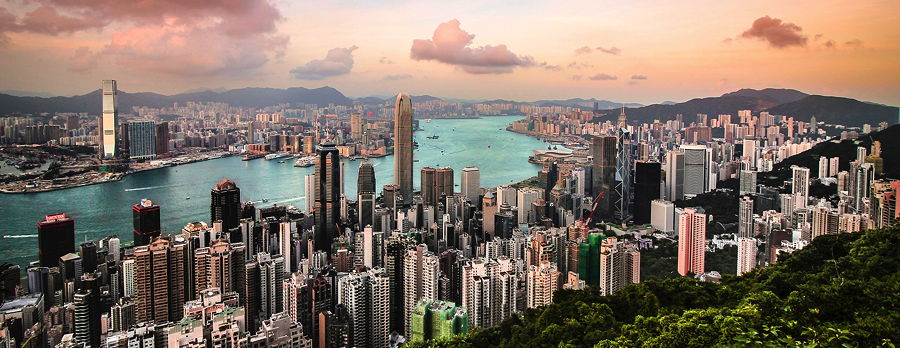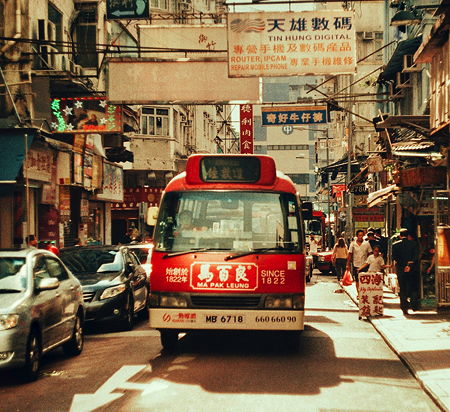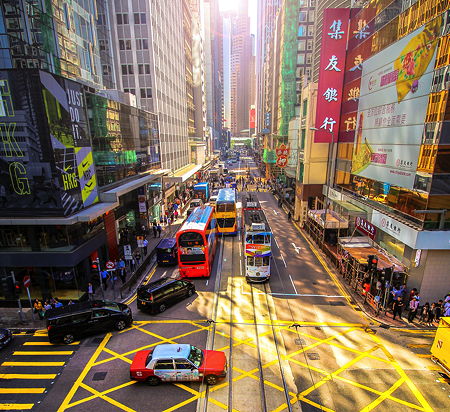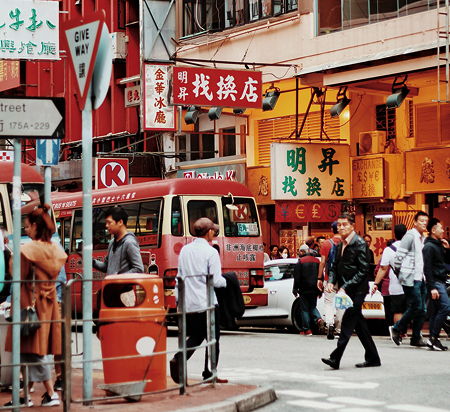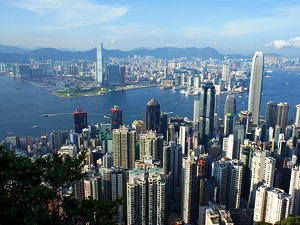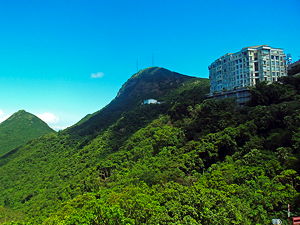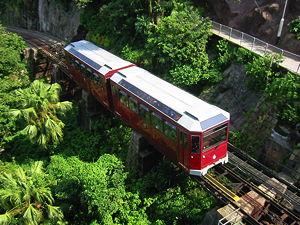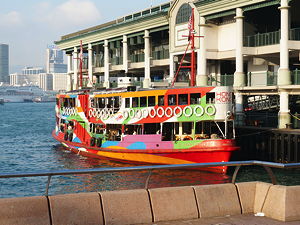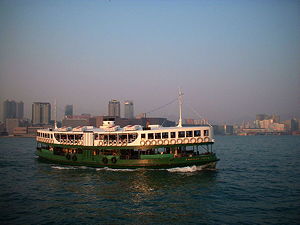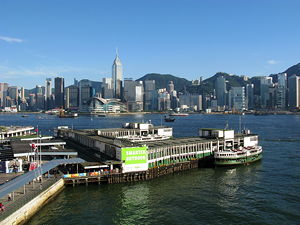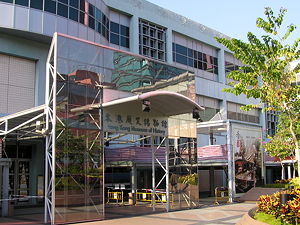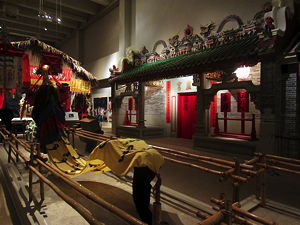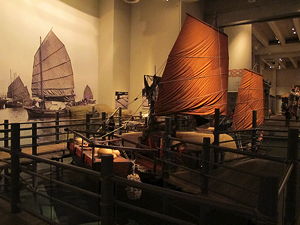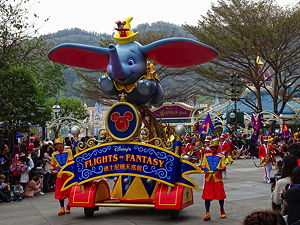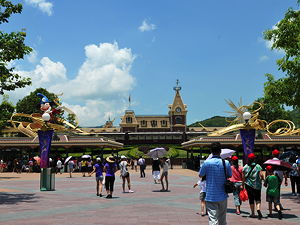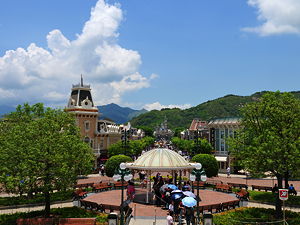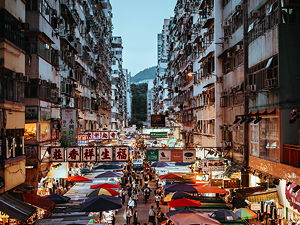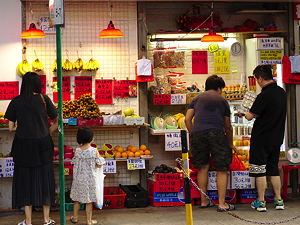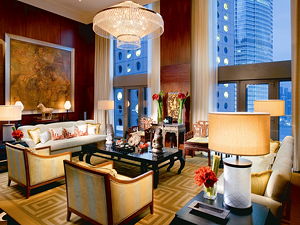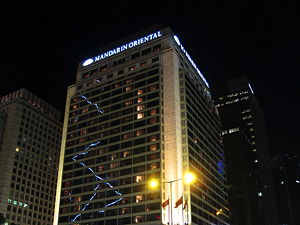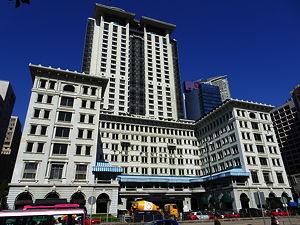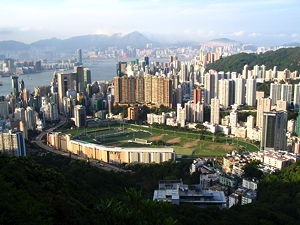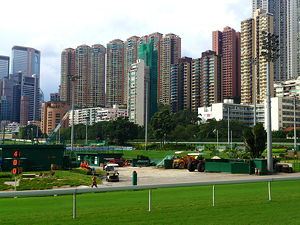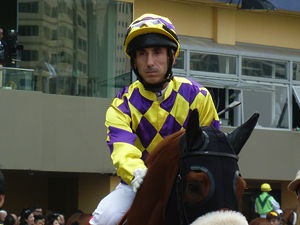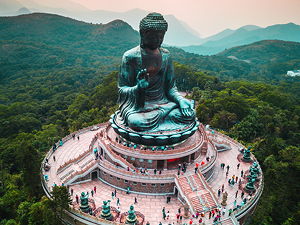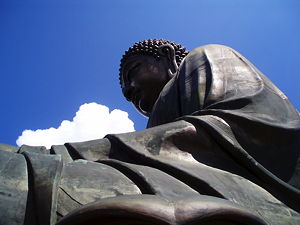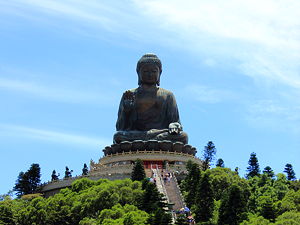Things to do in Hong Kong, China
Hong Kong occupies an area of 426 square miles and is home to over 7 million, making it one of the most densely populated places on earth.
Hong Kong became a British colony after the First Opium War (1839-1842) and was handed back to China in 1997. Despite the handover, Hong Kong remains a capitalist international finance centre with a democratic political system and independent judiciary. And it offers a frenetic and fascinating experience for tourists, who can enjoy its world-famous skyline, first-rate shopping and dining, and unique colonial-Chinese history.
This page was last updated in January 2020.
1. Victoria Peak
Victoria Peak (also known as Austin Mountain or simply The Peak) is a 552 metre high mountain found on the western half of Hong Kong Island.
The Peak is a major tourist attraction, offering spectacular views over Hong Kong Island, Kowloon and many smaller surrounding islands. The upper reaches of the Peak contain some of Hong Kong's highest-value residential areas (for instance, the sixth Governor built his summer residence here in 1868).
In 1888, the Peak Tram Funicular was opened. The Funicular, with its distinctive post-box red trams, ascends about 370 metres in height (at a gradient of between 4 and 27 degrees) and has a maximum speed of 6 metres per second: this is certainly the most stylish way to arrive.
In addition to the views, Victoria Peak offers a good restaurants, a number of nature walks (we enjoyed the 3.5 km Hong Kong trail along Lugard and Harlech roads), and the Peak Tower and Peak Galleria shopping centres.
where? The Lower Peak Tram station is located on Garden Road (near Hong Kong park). Take bus 15C from the Star Ferry Pier. Alternatively, the Peak can be accessed by taxi or bus (bus 15 or green minibus 1), or on foot (from Victoria Gap by walking up Mount Austin Road).
when? The Peak is open all year round, though it is best to go on a clear day or night. The Funicular operates from 7 am to 12 midnight, 365 days a year. Trams depart every 10 to 15 minutes.
£$€¥ A return ticket for an adult on the Peak Tram Funicular costs HK$52 (children/senior citizens HK$23).
2. The Star Ferry
Founded in 1888, the Star Ferry transports passengers on four routes, the most popular being that between Hong Kong Island and Kowloon.
12 boats are now in service, transporting around 70,000 passengers per day. Whilst there are other ways of crossing the harbour (for example, the underground system or by road tunnels), the Star Ferry is inexpensive, efficient and offers fabulous views of the Hong Kong skyline.
The trip is also an experience, with the green diesel-powered ferries being one of the icons of Hong Kong.
The journey between Hong Kong Island and Kowloon takes nine minutes, with passengers able to choose between sitting on the lower or upper decks (the upper deck being slightly more expensive and hence less crowded).
where? Ferries leave from the Star Central Pier (also known as Central Ferry Piers 7 and 8) on Man Kwong Street.
when? From 6.30 am to 11.30 pm daily, with ferries running every 8 to 12 minutes.
£$€¥ Adults: Mon to Fri HK$2.70 (upper deck), HK$2.20 (lower deck). Other times: HK$3.70 (upper deck), HK$3.10 (lower deck). Children: Mon to Fri HK$1.60 (upper deck), US$1.50 (lower deck). Other times HK$2.20 (upper deck), HK$2.10 (lower deck).
3. Hong Kong Museum of History
The Hong Kong Museum of History was established in 1975 and houses galleries with a floor area of over 17,500 square metres.
The museum's permanent exhibit is entitled The Hong Kong Story, and outlines the natural environment, folk culture and historical development of Hong Kong between 400 million years BC and the re-unification of Hong Kong with China in 1997.
There are a large number of interesting artefacts, which are expertly presented, and videos introducing each gallery. We particularly enjoyed the seventh and eighth of the Story's nine galleries, devoted to the Opium Wars and the Cession of Hong Kong to Britain in the mid-nineteenth century and the Japanese occupation of the twentieth century.
The museum also houses a number of special exhibitions,
currently The Hong Kong Jockey Club Series' exhibition of Ming
Porcelain.
where? 100 Chatham Road South, Tsim Sha Tsui, Kowloon, Hong Kong (next to the Hong Kong Science Museum, Tsim Sha Tsui East). The Museum is within walking distance of Tsim Sha Tsui, Jordan, Hung Hom or East Tsim Sha Tsui MTR stations. There are also bus and minibus stops outside the Museum.
when? Wed to Mon (10 am to 6 pm) (late opening until 7 pm on Sunday and Public Holidays). Closed Tues and first two days of Chinese new year.
£$€¥ THe permanent exhibition is free. Other exhibitions: Adults: HK$10, Concessions: HK$5, free entry on Weds.
4. Disneyland
Hong Kong Disneyland is built on reclaimed land in Penny's Bay, Lantau Island.
Opened in 2005, the park consists of four themed lands: Fantasyland, Adventureland, Tomorrowland, and Main Street USA (with three more themed areas—Grizzly Tail, Mystic Point and Toy Story Land—opened since 2014).
The themed lands contain a mixture of rides (ranging from the relatively sedate magic teacups to the breathtaking Space Mountain rollercoaster), other attractions (for example, guests can ride a locomotive around the park and watch cabaret shows), street entertainers (many are dressed as Disney characters, with others signing or performing magic), restaurants and shops.
The park's characters use English and Cantonese to communicate with visitors. The park has a daily capacity of 34,000 and attracted over 5 million visitors in its first year of operation.
where? The Park is located on Penny's Bay, Lantau Island. The most convenient way to get there is by using the MTR (which takes about 30 minutes from Hong Kong Island or Kowloon). The Park also has a limited number of car-parking spaces.
when? Opening times vary, but are generally between 10 am and 9 pm (365 days a year). Check the Park's website for details.
£$€¥ Adults: HK$639, Children (3-11): HK $475. Tickets can vary depending on special offers. Make sure to check the park's website.
5. The Markets
Hong Kong is well-known for its shopping, and in particular its high-end designer stores and huge shopping malls.
Those looking for a more unique experience should visit some of Hong Kong's vibrant markets (though be prepared to haggle!). We recommend the Ladies' Market, the Temple Street Night Market and the Stanley Market. The Ladies' Market is the place for bags, accessories and inexpensive clothes (for both men and women); but please don't think that you are buying genuine designer items!
The Temple Street Night Market is particularly atmospheric, selling electronic goods, CDS, clothing and tasty local delicacies. Fortune-tellers and street entertainers are also to be found at the Yau Ma Tei end of the street. The Stanley Market is altogether calmer, and the best place to pick up souvenirs such as Chinese artwork, silk collectibles and other curios.
where? Ladies' Market: Tung Choi Street, Mong Kok, Kowloon (MTR Mongkok Station Exit E2). Night Market: Temple Street, Yau Ma Tei, Kowloon (MTR Jordan Station Exit A. Turn right into Jordan Road, then right into Temple Street). Stanley Market: Stanley Market Road, Stanley, Hong Kong Island (MTR Hong Kong Station Exit D and take bus 6, 6A, 6X, 66 or 260 from Exchange Square Bus terminus, Central)
when? The Ladies' Market is open from 12 noon to 11.30 pm, the Night Market from 4 pm until midnight, and the Stanley Market from 10.30 am to 6.30 pm.
6. A drink in a top hotel
Hong Kong is well-known for its top-end hotels. Foremost amongst them are the Peninsula and the Mandarin Oriental.
The Peninsula, opened in 1928, is located on Kowloon and offers fantastic views over the harbour to Hong Kong Island. Room rates range from HK$4,200 per night (for a standard room) to HK$68,000 per night (for the Peninsula Suite). Those staying in the top rooms will have use of one of the hotel's 14 green Rolls Royce Phantoms. But you needn't stay to enjoy the Hotel: we recommend a trip for traditional English-style afternoon tea in the elegant lobby.
The clinking of china will probably be accompanied by soothing music from a string quartet. The Mandarin Oriental is similarly luxurious. Here, we recommend a late-night drink at the M-Bar. Perched on the 25th floor of the hotel, the M-Bar has a central lotus-shaped bar, and trendy charcoal velvet and silver-leaf furnishings. But the real draw is the view over the Harbour and Hong Kong's skyline.
where? The Peninsula: Salisbury Road, Kowloon, Hong Kong. The closest station is Tsim Sha Tsui. The Mandarin Oriental: 5 Connaught Road C Central, Hong Kong. The closest station is Central.
£$€¥ Tea at the Peninsula costs about $350 per guest
7. Happy Valley Racecourse
The sport of kings is the only legal form of gambling in Hong Kong, and is extremely popular.
The Happy Valley Racecourse, first opened in 1846, is the most famous and popular of Hong Kong's courses. The racecourse is an oasis of green amongst the heavily built-up metropolis. It has tight tracks, high stands, and is illuminated by floodlights on race nights: its electric atmosphere makes it well worth a visit.
The second floor of the course's grandstand houses the Hong Kong Racing Museum, with galleries devoted to the origin of horses raced in Hong Kong, the construction and history of the Happy Valley course, and the understanding of horses.
where? Happy Valley Racecourse, 2 Sports Road, Happy Valley, Hong Kong Island, China. Directions: Tram to Happy Valley or MRT to Causeway Bay.
when? Races are regularly staged on Wednesday, Saturday and Sunday between September and June.
£$€¥ Entrance fees start from HK$10, but you can pay considerably more if you want a seat high up in the grandstand. Minimum bet on races is HK$10. Whilst some pay extra to get into the tourist area, many regard the extra expense as unnecessary.
8. The Big Buddha
The Big Buddha, completed in 1993, is located near to Po Lin Monastery at Ngong Ping, Lantau Island (one of the smaller islands that make up the greater Hong Kong area).
Sitting on a lotus throne on a three-platform altar, the 110-foot tall Buddha is surrounded by six smaller bronze statues and weighs 250 tonnes. Most visitors will be happy to climb the 286 steps to reach the Buddha, though there is vehicular access for the infirm.
The views from the Buddha's altar make the effort worthwhile. Visitors can also access the Buddha's interior halls which display historical items, murals and a giant bell.
The nearby Po Lin Monastery is also worth a look. Here, visitors can watch monks go about their daily routine, drink tea in the Monastery's tea gardens, or enjoy a vegetarian lunch prepared by the monks.
where? Lantau Island, Ngong Ping. Directions: travel to Tung Chung station via the MTR and then take buses NLB 2 or NLB 23, the cable-car or a taxi.
when? The Buddha is open between 10 am and 5.45pm, seven days a week. The Po Lin Monastery is open on weekdays only.
£$€¥ Access to the Buddha and the Monetary is free, though there is a small charge to enter its interior halls
